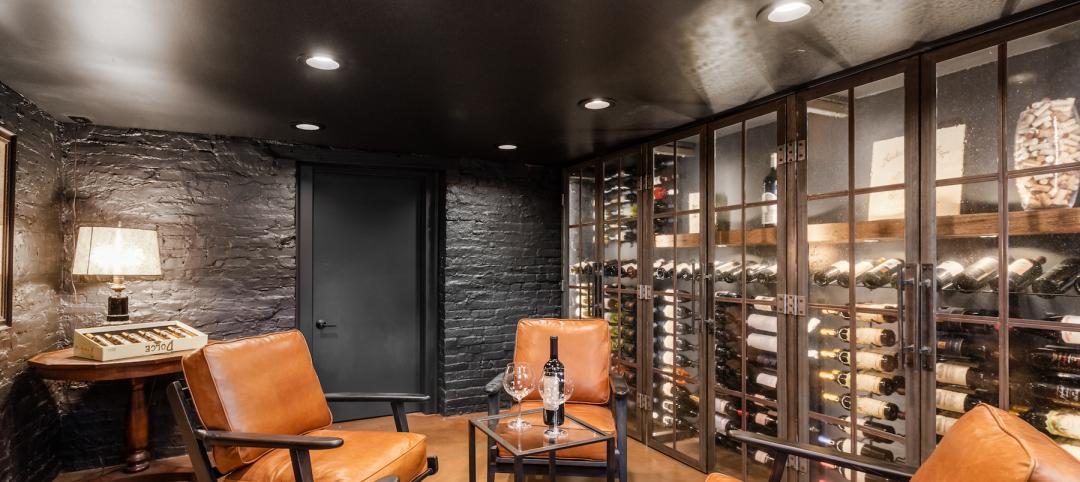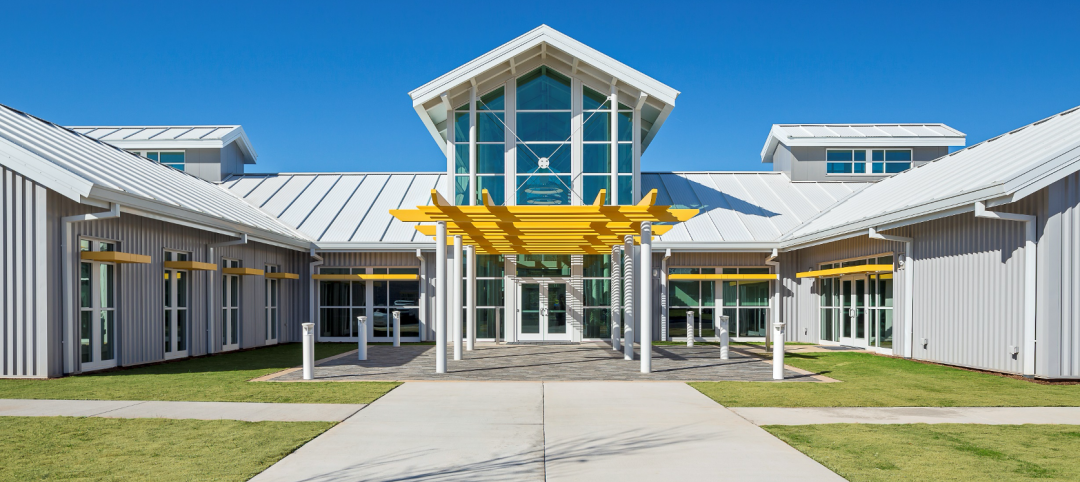Failure modes of glass systems under the extreme heat and pressures of building fires are reasonably well known, yet still hard to predict. In a recent fire simulation on a three-story structure built in India and studied by Underwriters Laboratories, the façade system of toughened glass and aluminum composite panels performed better than expected. That is, the glass did: As the aluminum cladding’s window frames deformed and expanded under heat, “the glass panels did not break due to fire but fell to the ground in intact form,” wrote the captivated research team.
In many cases, however, glass panels and structural glazings subjected to fire do fail. “Compared to other traditional materials for buildings, standard glass is typically characterized by brittle behavior and limited tensile resistance,” according to Chiara Bedon, PhD, a professor at Italy’s University of Trieste, who has studied structural glass systems exposed to fire. “The intrinsic properties of glass—together with typically limited thickness-to-size ratios for glazing elements, the mutual interaction of glass components with adjacent constructional elements as a part of full assemblies, and the combination of mechanical and thermal phenomena—make glass structures highly vulnerable,” says Bedon.
Many of those phenomena are considered in building codes, life-safety codes, and material performance standards. Products such as wire glass—including glazings with the unique look of cast and polished wire, as well as laminated and multi-laminated glazings and glass block—are engineered to block smoke and flames and to withstand high pressures and certain effects of hose streams, all of which can occur during fire events. Many types of glazings can withstand thermal shock, another key phenomenon. Glass that is fire-rated may als
LEARNING OBJECTIVES
After reading this article, you should be able to:
• Describe the safety and security benefits of fire-rated glazing and window systems.
• Discuss the opportunities and limitations of fire-rated glazing applications.
• Compare the competing priorities, codes, and standards related to the specification and detailing of transparent enclosures.
• List and contrast the systems and products used for fire-rate glass assemblies.
TAKE THIS AIA COURSE AT BDCUNIVERSITY.COM
| Sponsored by: |  |
Related Stories
Sponsored | BD+C University Course | Aug 24, 2022
Solutions for cladding performance and supply issues
This course covers design considerations and cladding assembly choices for creating high-performance building envelopes — a crucial element in healthy, energy-efficient buildings.
Sponsored | | Aug 4, 2022
Brighter vistas: Next-gen tools drive sustainability toward net zero line
New technologies, innovations, and tools are opening doors for building teams interested in better and more socially responsible design.
Sponsored | BD+C University Course | May 10, 2022
6 steps to designing a modern wine display
Design-focused wine displays are becoming increasingly popular in amazing residential and commercial properties throughout the world. Top design/build professionals are using stylish wine racks and other premium materials to create wine cellars that are too beautiful to hide in out-of-the-way places like dusty basements. This course explains why wine cellars have become so popular and the key aspects of designing an appealing modern wine cellar, broken into six planning steps that should be considered during pre- or early-construction phases.
Sponsored | BD+C University Course | May 10, 2022
Designing smarter places of learning
This course explains the how structural steel building systems are suited to construction of education facilities.
Sponsored | Multifamily Housing | May 8, 2022
Choosing the right paver system for rooftop amenity spaces
This AIA course by Hoffmann Architects offers best practices for choosing the right paver system for rooftop amenity spaces in multifamily buildings.
Sponsored | BD+C University Course | May 5, 2022
Designing with architectural insulated metal wall panels
Insulated metal wall panels (IMPs) offer a sleek, modern, and lightweight envelope system that is highly customizable. This continuing education course explores the characteristics of insulated metal wall panels, including how they can offer a six-in-one design solution. Discussions also include design options, installation processes, code compliance, sustainability, and available warranties.
Sponsored | Healthcare Facilities | May 3, 2022
Planning for hospital campus access that works for people
This course defines the elements of hospital campus access that are essential to promoting the efficient, stress-free movement of patients, staff, family, and visitors. Campus access elements include signage and wayfinding, parking facilities, transportation demand management, shuttle buses, curb access, valet parking management, roadways, and pedestrian walkways.
Sponsored | BD+C University Course | May 3, 2022
For glass openings, how big is too big?
Advances in glazing materials and glass building systems offer a seemingly unlimited horizon for not only glass performance, but also for the size and extent of these light, transparent forms. Both for enclosures and for indoor environments, novel products and assemblies allow for more glass and less opaque structure—often in places that previously limited their use.
Sponsored | BD+C University Course | Apr 19, 2022
Multi-story building systems and selection criteria
This course outlines the attributes, functions, benefits, limits, and acoustic qualities of composite deck slabs. It reviews the three primary types of composite systems that represent the full range of long-span composite floor systems and examines the criteria for their selection, design, and engineering.
Sponsored | BD+C University Course | Apr 10, 2022
Designing with commercial and industrial insulated metal wall panels
Discover the characteristics, benefits and design options for commercial/industrial buildings using insulated metal panels (IMPs). Recognize the factors affecting panel spans and the relationship of these to structural supports. Gain knowledge of IMP code compliance.


![See-through and safe: Innovations in fire-rated glazing [AIA course] See-through and safe: Innovations in fire-rated glazing [AIA course]](/sites/default/files/SAFTI%20FIRST%20final%201.jpg)













